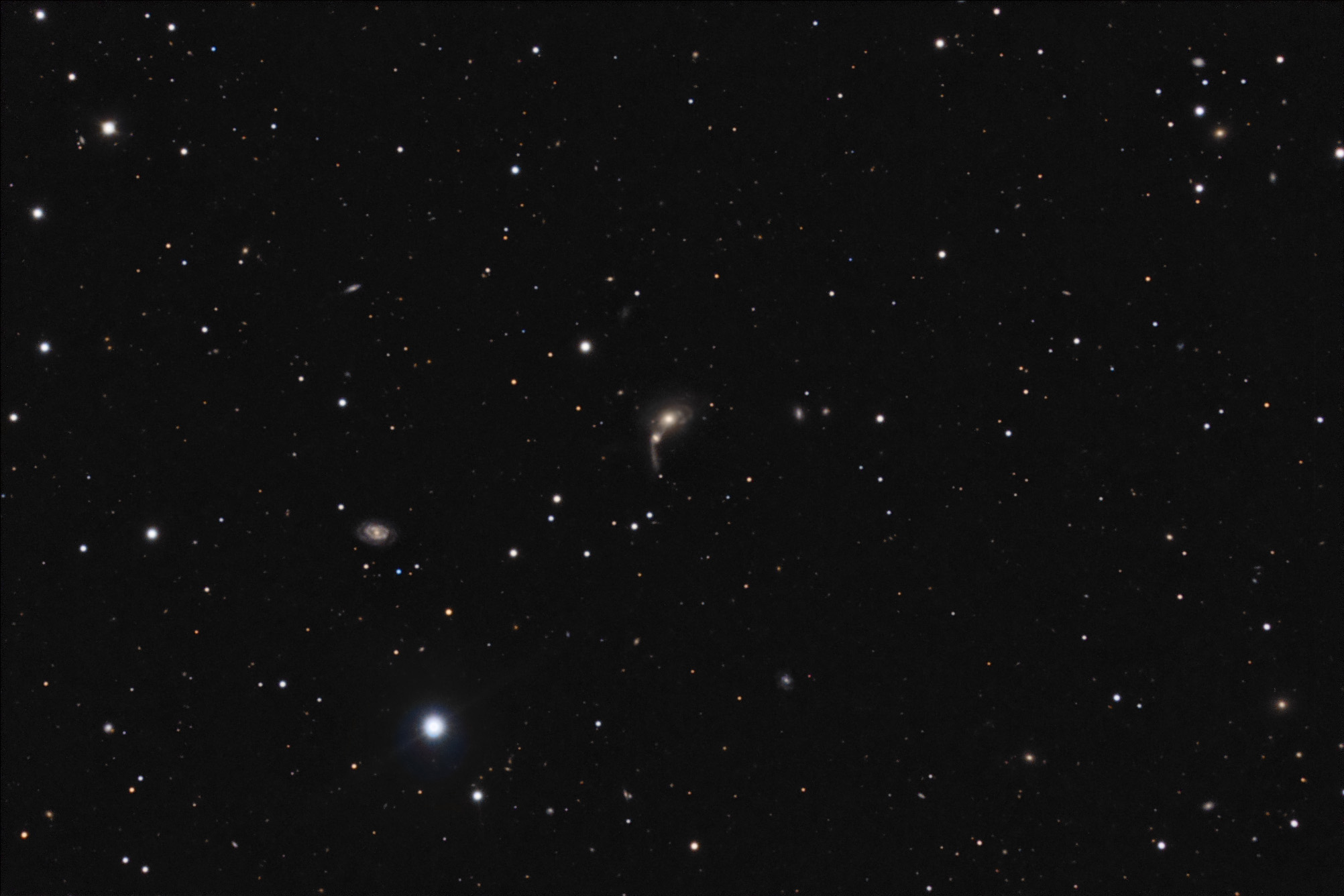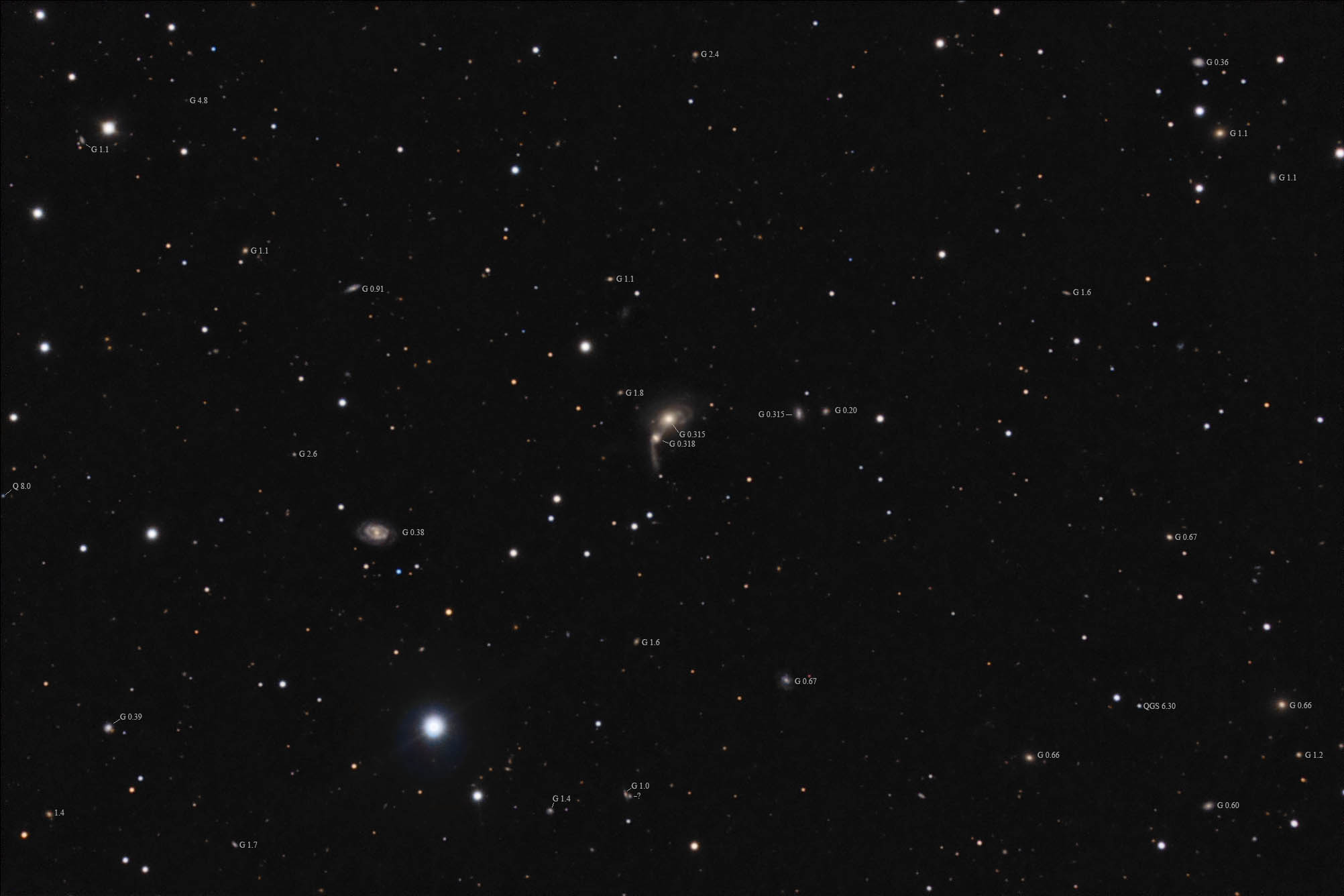Object name: ARP106 Arp 106 is an interacting pair of galaxies in Coma Berenices about 315 million light-years away. Arp put it in his category of elliptical and elliptical-like galaxies connected to spirals. He made no comment on this entry.
The two galaxies are known as NGC 4211. While some catalogs give only one number to both a few do have separate numbers. MGC +5-29-042 is the northern member and MGC +5-29-043 is the southern to give one example. NED classes both as S0/a pec. I would say the southern one is likely S0 but the upper appears to be a distorted Sa or possibly Sb spiral to me. In any case, both have been severely disrupted by their interaction. They have somewhat different redshifts. I don't know if that will be enough to prevent them from merging in the future or not. I rather suspect they will merge eventually becoming an elliptical galaxy. Note that there appears to be a faint plume east of the southern well-defined plume. I see hints of it in the Sloan image as well. NGC 4211 was discovered by Édouard Stephan on April 30, 1881. I don't know if he saw the companion or not. I suspect he didn't.
Just west of the pair is LEDA 1828543 (SDSS J121521.05+281048.0), a spiral galaxy that is likely a member of the same group as Arp 106 as its redshift is practically the same.
Toward the southwest (lower right) corner is an object that NED shows as being a quasar in some catalogs, an IR source only in the 2MASX catalog, a star in the Sloan survey and a galaxy at a slightly different position (0.1" different in declination). NED shows two redshifts, one is z=0.692000, the other is z = 4.88922! Now that's a discrepancy. The distance I used on the annotated image is based on the lower z value which puts it 6.3 billion light-years away. The other value would put it over 12.4 billion light years which would mean it is brighter than any quasar I ever heard of. The lower value is even surprising considering its magnitude of 17.8.
An interesting galaxy at 670 million light years is SDSS J121522.43+280406.9 south-southwest of Arp 106. It seems to have one heavy arm on the south. It would fit in either Arp's one arm category or heavy arm category.
Arp's image
http://ned.ipac.caltech.edu/level5/Arp/Figures/big_arp106.jpeg
14" LX200R @ f/10, L=4x10' RBG=2x10'x3, STL-11000XM, Paramount ME Related Designation(s):ARP 106, ARP106, CGCG 1213.1+2827, CGCG 158-053, IRAS 12130+2826, IRAS F12130+2826, ISOSS J12156+2809, KPG 327, NGC 4211, UGC 07277, VV 199, [SLK2004] 0674, | | 
